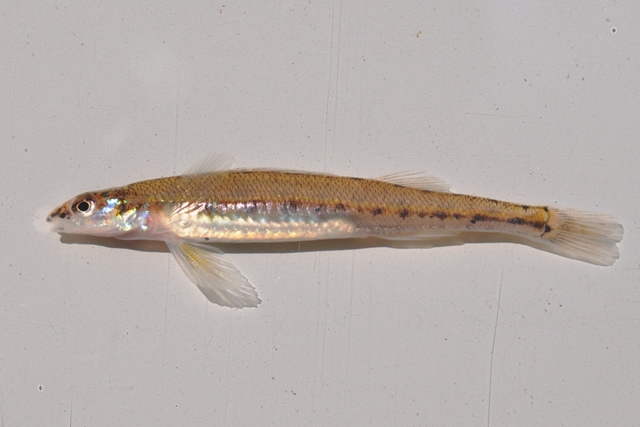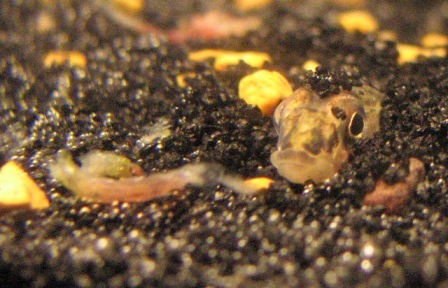Eastern Sand Darter
(Ammocrypta pellucida)


The eastern sand darter burrows into sand where it waits for food items to float by. Often the only part of the fish visible is their eyes (below).
Description
The eastern sand darter is a very long narrow fish. They have a distinct row of 12-16 dusky spots down the center of their back. These split into two rows along the dorsal fins. They also have a row of 9-14 oblong dusky spots along their side. They are a light yellow or tan color on their back with lighter white or silvery sides and belly. They have no scales on the lower half of their sides and belly. The eastern sand darter has an over all translucent appearance to their body. There are no obvious differences in coloration between males, females, and young.
Habitat and Habits
The eastern sand darter is found in slow moving portions of streams and rivers where the bottom is composed of clean sand. They are very intolerant of silt or mud covering up the clean sand and often disappear from an area or entire stream if this happens. They spend much of their time buried in the sand with only the tip of their snout and eyes exposed. From their hiding place they watch for passing food items and quickly dart out, grab the food, and then quickly burrow back into the sand. The eastern sand darter is found in both the Lake Erie and Ohio River drainage in Ohio. They are most abundant in medium to large size streams that stay relatively clear and have an abundance of clean silt free sand.
Reproduction and Care of the Young
Eastern sand darters spawn later in the year than many darter species. Females full of eggs can sometime be found as late in the year as August. They more typically spawn in June or early July burying their eggs in sand. No further parental care is given.